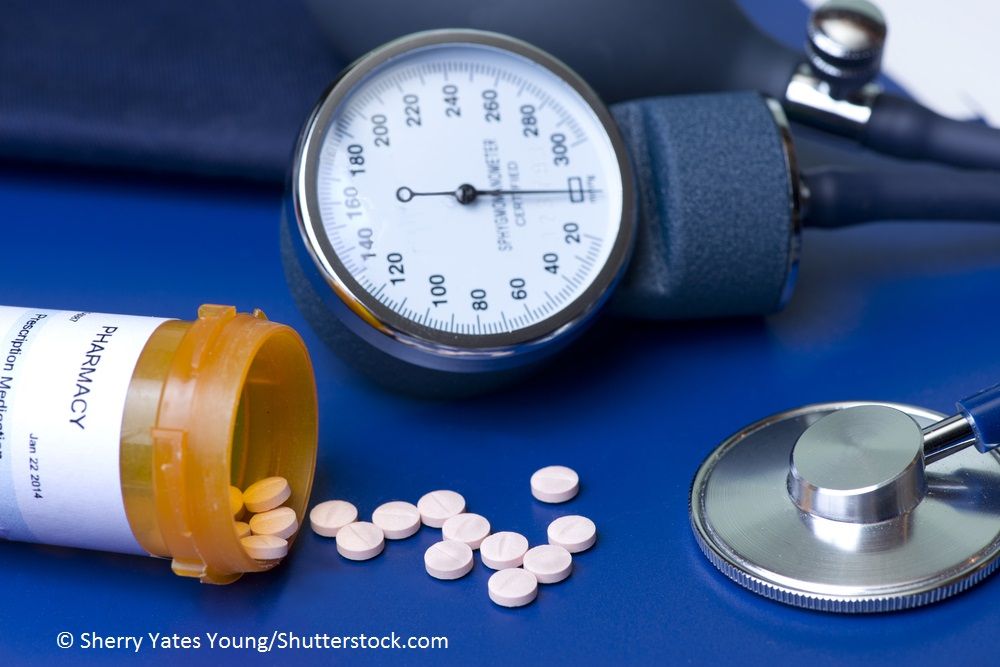- Clinical Technology
- Adult Immunization
- Hepatology
- Pediatric Immunization
- Screening
- Psychiatry
- Allergy
- Women's Health
- Cardiology
- Pediatrics
- Dermatology
- Endocrinology
- Pain Management
- Gastroenterology
- Infectious Disease
- Obesity Medicine
- Rheumatology
- Nephrology
- Neurology
- Pulmonology
Treatment of Hypertension in the Frail Elderly Population
Assessment of frailty status, as well as chronological age, should be used to make clinical decisions.
© Sherry Yates Young/Shutterstock.com

Isolated systolic hypertension is the most common form of hypertension seen after the age of 50. There is substantial clinical trial evidence showing that treatment of hypertension reduces incident stroke, myocardial infarction (MI), and heart failure (HF). The optimal target for blood pressure control has been uncertain in the elderly, with concerns about potentially worsening outcomes with more intensive blood pressure control in these patients.
Epidemiologic studies generally consider “old” to be between the ages of 60 – 79 years, and the “very old” to be 80 years and older. By 2050, it is expected that 4.5% of the US population will be above the age of 85 years. In treatment of hypertension in the elderly, chronological age alone should not be used to make clinical decisions – it is important to assess frailty status. Frailty can be assessed using a questionnaire and gait speed. Patients are considered to be “frail” if they meet 3 of the following 5 criteria: unintentional weight loss of 10 lbs. or more, self-reported exhaustion, impaired grip strength, low physical activity, and slow walking speed (takes more than 7.5 seconds to cover a distance of 20 feet unaided)
Studies have shown cardiovascular benefit with treatment of relatively healthy patients who are very old. The HYVET trial results (done in those above the age of 80) showed significant reductions in heart failure and stroke with lowering blood pressure (systolic blood pressure below 150 mm Hg compared to higher levels). In SPRINT, which included non-institutionalized elderly patients (ie, those who did not have dementia and are not nursing home residents) above the age of 75, significant cardiovascular and mortality benefit was seen to extend to this subgroup with intensive blood pressure lowering (aiming for systolic blood pressure below 120 mm Hg). Additional data from SPRINT in this subtroup of patients will soon be published, particularly with regards to whether the frail elderly did as well as the fit elderly, and whether more adverse events were seen with intensive treatment in the frail elderly; this information will be useful to inform decisions in this subgroup.
Nursing home patients, and those with cognitive dysfunction or dementia, may potentially fare worse with intensive treatment. Again, it should be noted that patients with dementia and nursing home residents were not included in the SPRINT trial. Polypharmacy and combination therapies are risk factors for worse outcomes in these patients. Institutionalized elderly patients are often on psychotropic medications, which increase the risk for lower blood pressure and falls. Unprovoked low blood pressure is a harbinger of mortality, and some frail elderly patients may actually benefit from relatively higher systolic blood pressures.
What should we do?
- Healthy elderly patients with intact activities of daily living (ADLs), cognitive function, and gait speed may be treated similar to younger patients.
- Individualize treatment in the frail elderly, especially those who have dementia and/or are nursing home residents.
- In community dwelling frail elderly patients, additional evidence from the SPRINT trial is expected to be published soon, which can help guide treatment in this subgroup
- Psychotropic agents can lower BP and may lead to falls, therefore, a complete review of all medications should be done in these patients before deciding to add or intensify antihypertensive therapy.
- Use caution with combination antihypertensive medications
- Frequent follow up, along with close monitoring of renal function and electrolyte levels, is advisable in frail elderly patients, especially if intensifying antihypertensive therapy.
